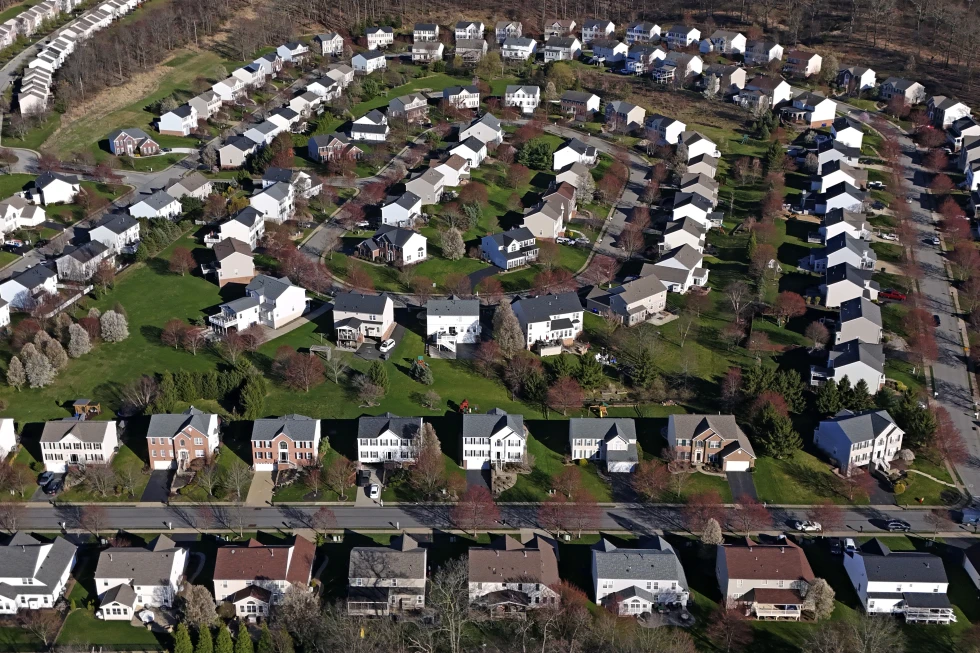
LOS ANGELES — The spring homebuying season is off to a sluggish start as home shoppers contend with elevated mortgage rates and rising prices.
Sales of previously occupied U.S. homes fell 4.3% in March from the previous month to a seasonally adjusted annual rate of 4.19 million, the National Association of Realtors said Thursday. That’s the first monthly decline in sales since December and follows a nearly 10% monthly sales jump in February.
Existing home sales also fell 3.7% compared with March last year. The latest sales still came in slightly higher than the 4.16 million pace economists were expecting, according to FactSet.
Despite the pullback in sales, the national median home sales price climbed 4.8% from a year earlier to $393,500. That’s the highest median sales price for any March on records going back to 1999 and marks the ninth month in a row that prices have risen compared to a year earlier.
The latest surge in prices reflects the heightened competition many home shoppers are facing. Consider, 60% of homes purchased in March sold within less than a month of hitting the market. And 29% of homes sold above their initial list price, up from 28% in March last year, said Lawrence Yun, the NAR’s chief economist. “Inventory is simply not there,” Yun said.
While the supply of homes on the market remains below the historical average, the typical increase in homes for sale that happens ahead of the spring homebuying season gave home shoppers a wider selection of properties to choose from.
At the end of last month, there were 1.11 million unsold homes on the market, a 4.7% increase from February and up 14.4% from a year earlier, the NAR said. That’s still well short of the 1.7 million homes on the market in March 2019, before the pandemic.
The available inventory at the end of last month amounted to a 3.2-month supply, going by the current sales pace. That’s up from a 2.9-month supply in February and a 2.7-month supply in March last year. In a more balanced market between buyers and sellers, there is a 4- to 5-month supply.
That shortage of homes on the market means home sellers generally having an edge on buyers, especially those vying for the most affordable homes, which often fetch multiple offers.
The U.S. housing market is coming off a deep, 2-year sales slump triggered by a sharp rise in mortgage rates and a dearth of homes on the market. Sales of previously occupied U.S. homes sank to a nearly 30-year low last year, tumbling 18.7% from 2022 as the average rate on a 30-year mortgage surged to a 23-year high of 7.79%, according to mortgage buyer Freddie Mac.
A modest pullback in mortgage rates early this year helped lift home sales in January and February, but rates mostly ticked up in February and March, when many of the home sales that were finalized last month would have taken place.
The average rate on a 30-year mortgage got as low as 6.67% in mid January, but has been hovering closer to 7% in recent weeks. When mortgage rates rise, they can add hundreds of dollars a month in costs for borrowers, limiting how much they can afford.
Mortgage rates have mostly drifted higher in recent weeks as stronger-than-expected reports on employment and inflation stoked doubt among bond investors over how soon the Federal Reserve will move to lower its benchmark interest rate.
Home loan borrowing rates are influenced by several factors, including how the bond market reacts to the Fed’s interest rate policy and the moves in the 10-year Treasury yield, which lenders use as a guide to pricing home loans.
The yield on the 10-year Treasury jumped to around 4.66% on Tuesday — its highest level since early November — after top officials at the Federal Reserve suggested the central bank may hold its main interest steady for a while. The central bank wants to get more confidence that inflation is sustainably heading toward its target of 2%.
“Though rebounding from cyclical lows, home sales are stuck because interest rates have not made any major moves,” said Yun.
First-time homebuyers who don’t have any home equity to put toward their down payment continue to have a tough time getting into the housing market, though they accounted for 32% of all homes sold last month, an increase from 26% in February and 28% in March last year. That’s still well short of the 40% of sales they’ve accounted for historically.
Prospective homebuyers are facing competition from buyers who can afford to buy a home in cash. Some 28% of homes sold last month were purchased entirely with cash, down from 33% in February, but up from 27% a year ago, the NAR said.
Many economists still expect that mortgage rates will ease modestly this year, which could give homebuyers who can’t afford to pay all cash for a home more purchasing power.
Most forecasts have the average rate on a 30-year mortgage going no lower than 6% by the end of the year, however. That’s not likely to happen before inflation has cooled enough for the Federal Reserve to begin lowering its short-term interest rate.







